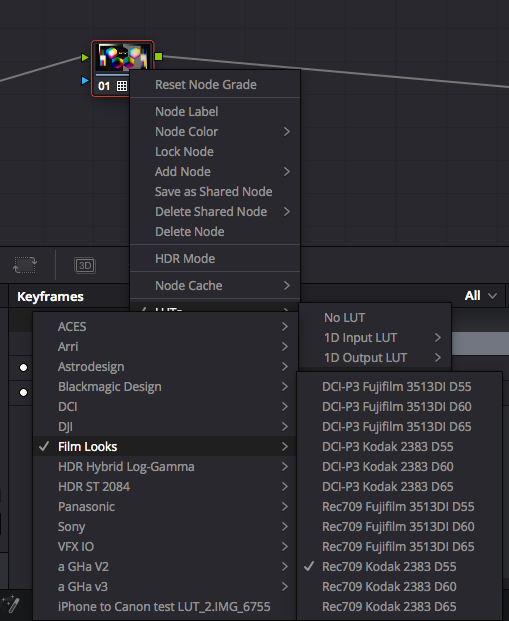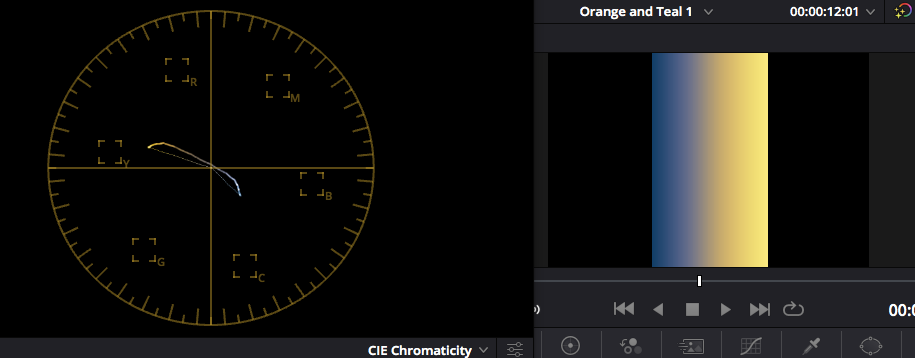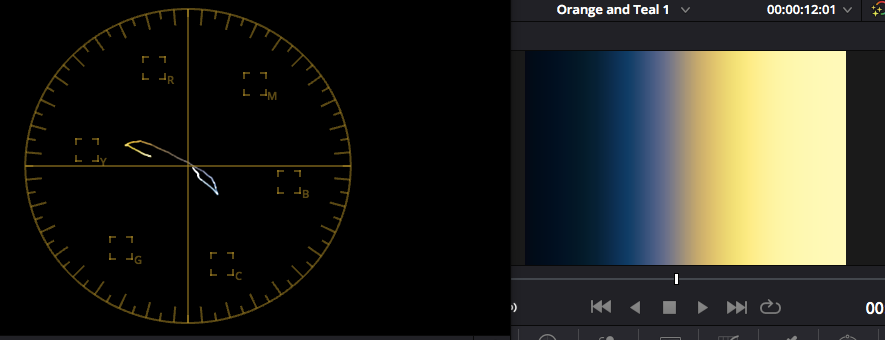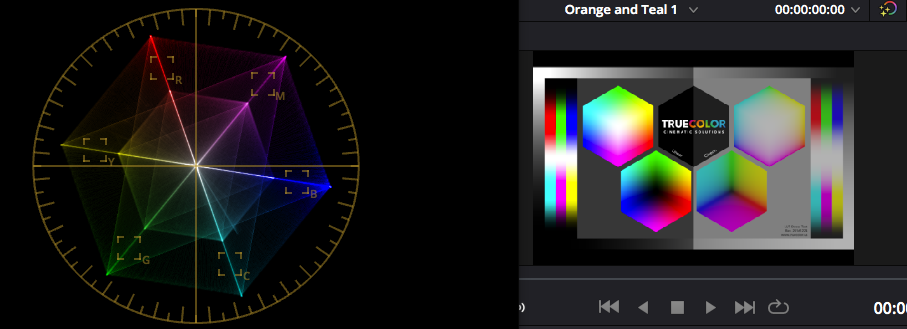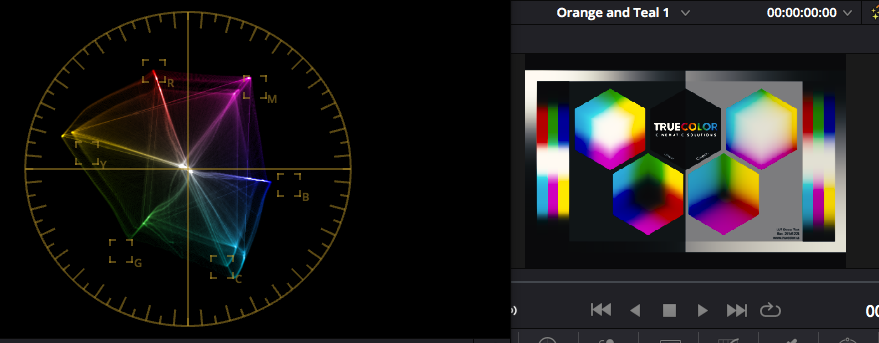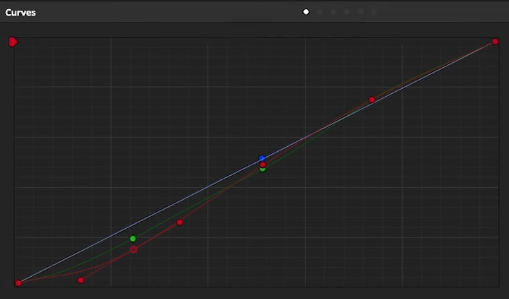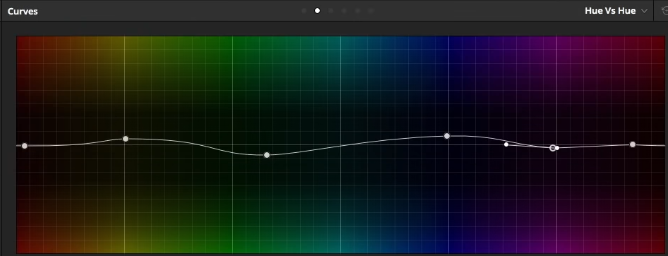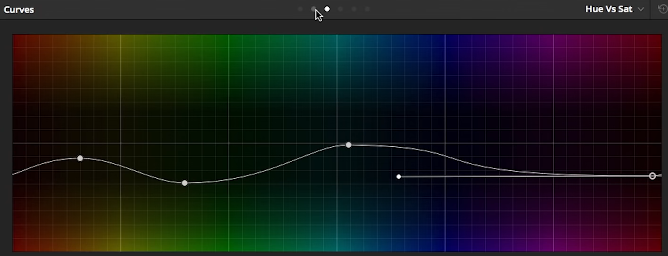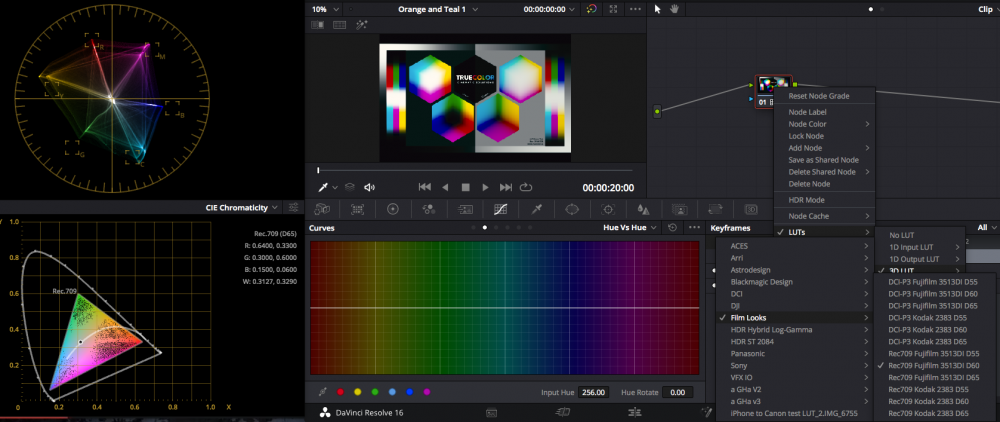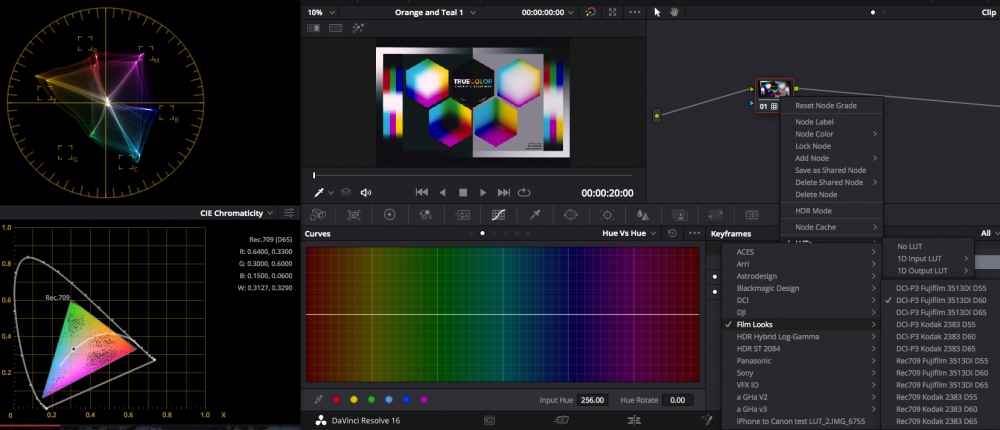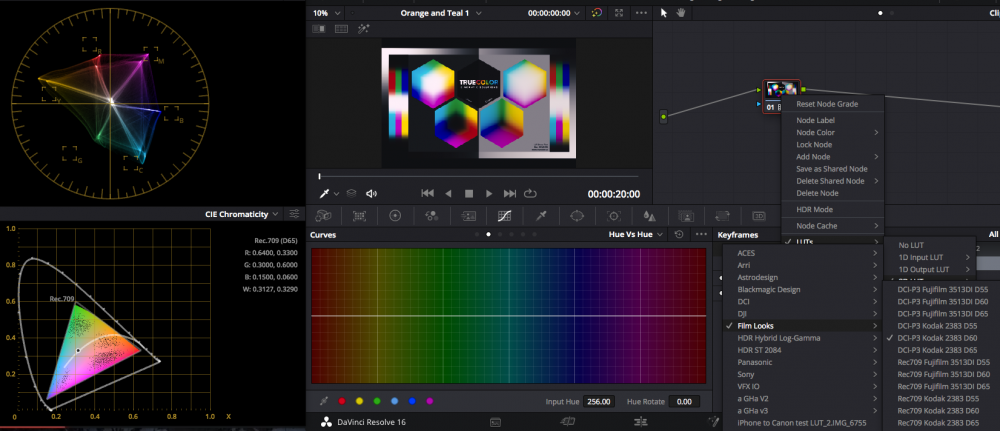-
Posts
7,987 -
Joined
-
Last visited
Content Type
Profiles
Forums
Articles
Everything posted by kye
-
You forgot whatever Veydra reissues Meike will be releasing for next to nothing!! I look forward to your ironglass lens impressions and footage...
-
No experience with the Olympus cameras, but I’d suggest that the best approach is just to google the various settings, do lots of tests and generally play with things. Sports and fast-moving things is difficult for AF, so you’ll need to dive in deep to get the best results. Good luck - i’ve heard that the Oly cameras have some real advantages over Panasonic but for some reason they don’t get the PR that the others get. I was considering an Olympus before I bought my GH5, but the 10-bit internal was more valuable to me than the superior AF or IBIS, but PDAF would sure be a huge advantage to have!
-
Best approach is to work out what you’re missing and then either fix that or give yourself a reality check.. For example, if you’re chasing good autofocus then you should consider why you need AF in the first place, and if using a deeper DoF would fix it, for example. The reality check is to assume you just bought an A7iii, so just donate $4K to charity to simulate the financial hit of being locked into the Sony lens rort, then take all your 10-bit footage and batch convert it to 8-bit and apply a sickly green WB to simulate the experience in post. There’s currently no FF camera that can do everything the GH5 does without giving up something. Even the S1H (which won’t fix your AF envy) will still hit the CC pretty hard and IIRC is bigger and heavier than the GH5. The grass always looks greener, but often it tastes just as bad, but in a different way.....
-
Cool looking lens.. Super wide and a lot smaller than the 40mm, so cool for less conspicuous run and gun.
-
If YT detects that you've used someone elses music then it applies the relevant rule from its database. Most songs get your video demonetised (which means the ad royalties go to the copyright holder of the music instead of you) but some songs are blacklisted and so your video is just blocked and no-one can view it. YT has a search engine here to inspect what the rules are: https://www.youtube.com/music_policies?ar=2&nv=1 TBH it's actually pretty draconian considering that you might plan, write, cast, shoot, edit, grade and publish a 90-minute video but if you include something like 10s of someone elses music then they get the entire ad revenue and you get nothing, but then again on the other hand YT gives you about 0.3c per view, so you're basically not making much money anyway, which is why every video is now sponsored.
-
Anyone know what the DR of the sensor is? The Canon film-making YouTubers have really struggled with the comparatively poor DR of late and one posted a series of videos from a trip that were clipped to hell and obviously had a bunch of interactions with other manufacturers because camera tests from other manufacturers followed quite closely.
-
Thanks to a nice sunset, I took a few RAW photos that are interesting. Here's the first one - sunlight and shade on the fence (which is made of small sticks). The image looks fairly neutral, if perhaps a little warm. In realty the sticks are pretty neutral, doing the silvering that weathered wood tends towards. If we apply some OTT saturation for diagnostic purposes, we get this: That looks fine, not counting the over-saturation, but is well within the colour palette of cinema. If I shift the WB a little towards "neutral" and put some colour in the shadows then this is what we get. You'll note from the vectorscope that this has had a slightly non-linear effect (I did this adjustment with the Offset control in the first node, so not sure why it would do that) but I don't think it takes us too far from reality: So, this is the natural colours created when the suns light is scattered by the atmosphere, which is why sunsets are orange/red/purple and the sky is blue. The sun is a pretty good approximation of a source of full-spectrum black-body radiation: https://lco.global/spacebook/light/black-body-radiation/ https://en.wikipedia.org/wiki/Black-body_radiation There appears to be a spectrum from Blue to Red that objects follow, depending on their colour temperature. Here's a chart showing the colour temperature of various stars for example: As all of these are sources of broad spectrum radiation they all kind of act the same in terms of rendering colour, also including incandescent light globes and fire. Here's the spectrum of an incandescent light globe: and I suspect that fire is broadly the same. We didn't really get different coloured light sources until we started messing with chemistry and making things like fluoresce, like this fluorescent light: So, the Orange / Teal look occurs in nature, and I presume we attach some kind of psychological sense of well-being from times we spent with other folks around a fire, being both warm and (relatively) safe.
-

Panasonic S1H review / hands-on - a true 6K full frame cinema camera
kye replied to Andrew Reid's topic in Cameras
Just did a couple of tests (8mm SLR Magic vs 7.5mm Laowa) and both wobbled a lot, although the 7.5mm wobbled a lot more. 7.5mm is only 6% wider than 8mm but it felt like there was more than 6% more wobble, although my test was very unscientific. Thinking about it more, Bill is right that it must be a comparison between a lens designed for a larger vs smaller sensor, however I think it might just be that wider lenses are more problematic due to the 3D projection onto 2D plane. I don't have any APSC or FF lenses wide enough for a real comparison as all my wider lenses are all MFT. It would be interesting if someone else could do the test though. -

Panasonic S1H review / hands-on - a true 6K full frame cinema camera
kye replied to Andrew Reid's topic in Cameras
Interesting question, and worthy of some testing. It will be to do with the level of distortion within the frame, but with all lenses there is a fundamental issue because the image projection is spherical and the sensor is flat, and it's worse on wider lenses, which I think is why wide lenses are either fisheyed or are very stretched in the corners. Let me do some tests.... -
Great stuff! Well done I also shoot family travel videos so it's always interesting to see the choices that others make - not too many people upload this type of content so thanks for sharing!
-
This is interesting to me, more from a nerd perspective rather than a desire to deliver in 8K, but interesting nonetheless. I think it would be really interesting to see real tests where an 8K sequence is downscaled to 4K or 2K, ran through the upscaler, then compared mathematically to the original resolution. Obviously we don't see exactly the same as a straight mathematical comparison, so subjective comparisons would also be useful, but comparisons can be made. I watched a comparison of some stills image upscalers and the person reviewing them consistently chose the worst quality ones because they smoothed the skin and did other things that no-skill retouchers love to do, so it would be nice to get more objective results.
-
Awesome! I can't watch it (title not available in my location) but great to see some distribution happening
-
Not necessarily. I just tested my Sandisk Extreme Pro C10 V30 U3 95MB/s and it tested at 85MB/s read and write, with a 5Gb file size and being almost full (which decreases performance - the BM app warned me that the test would be affected). 400Mbps is only about 50MB/s which the card can easily do, but the reason that the GH5 won't do the 400Mbps All-I mode is because the card isn't UHS-II. I think that might be a limitation of the GH5 and how it writes to the card perhaps, but I'm not sure. It just happens that that the V60 is only on UHS-II cards, so it's the right advice, but I bought my card on the basis that it could handle the bitrate, but it turns out there is more to it than that, because on bitrate alone my card would be V60 comfortably and almost V90.
-

Panasonic S1H review / hands-on - a true 6K full frame cinema camera
kye replied to Andrew Reid's topic in Cameras
I can't speak for Zak, but wide angle lenses have significant stretching on the edges/corners and when combined with IBIS (and potentially other kinds of stabilisation) it gives the edges a strange kind of warping effect, kind of like the jelly effects of rolling-shutter but in a different way. Depending on the motion involved it can look very very strange, and if you're doing pro work then it can absolutely ruin shots. -

Panasonic S1H review / hands-on - a true 6K full frame cinema camera
kye replied to Andrew Reid's topic in Cameras
Great looking stills. Nice work! Awesome to hear that your brother was behind FEOTFW, that was one of the shows I binge watched when I first saw it - it was just a bit different to the normal narrative tropes and cookie-cutter plot lines. There seems to be a ground-swell of comic adaptations to TV/Cinema so your brother may have many shows in his future. While i’m not a huge fan of the medium, I think that comic books have a huge untapped potential in terms of narrative innovation. Hollywood has only had the ability to create worlds that don’t function like our own (eg, aliens, outer space, different laws of physics, etc) for a few decades, but comics have had full creative control since the first cave paintings were made thousands of years ago, and so the plot-lines are much more creative. They are also much more mature, instead of having a world like ours but with one twist (like including the afterlife and ghosts for example) instead you get a rich world where that twist has been fully integrated and all the ripples and implications are also present. Lots of potential there I believe! -
Footage is a tricky thing. For many of us our best footage is unavailable for some reason. For the pros amongst us there are contractual limitations, and there are professional reputations at stake when quickly posting anything. For people like me who shoot personal work of friends and family, it’s more personal and sharing our family videos is a bit odd. Most YT people don’t share video of their families, especially the children. So that means that what is left is our second-best work, which is pretty difficult to share on forums such as this, partly because it’s a film-making forum so the level of scrutiny is very high, but also it’s the internet, and these forums aren’t immune to savage criticism from people that are all talk and don’t actually shoot anything themselves. It’s a tough thing..
-
Just make sure it's a UHS-II card. I've got the SanDisk Extreme 90MBps which can do the data rate easily but isn't UHS-II so won't do that mode.
-
It's relatively easy to work out how much DoF your eyes have by bringing up a test chart on a laptop / tablet, putting your finger in the line of sight of the chart and focussing on your finger and seeing which detail in the test chart is discernible and which isn't. It ranges with focus distance of course, and also with low light when your eye opens up giving a larger aperture. It's not the crazy DoF of a 50mm at 1.2 or anything, but the background defocus is a thing, and F4 of 5.6 is easily within the range of our vision, so should look natural. It's a good experiment to do so you're aware of it.
-
Soft in the corners isn't such a bad thing either. Lots of cine lenses have quite poor performance in the corners (even taking into account field curvature) and this only really matters when you put the subject in the corners of the frame. The eye is naturally drawn to things in focus (which is why DOPs use shallower DoF - people don't spend the entire movie looking at blurry backgrounds) so if your subject is nearer the centre then the softer edges will actually help draw attention to the subject instead of away from it.
-
This is what I used to think, but if we think about film stocks and how they have these tints (IIRC there were other film stocks that had magenta/green tint instead of yellow/cyan) then here's the issue - every film ever shot on these film stocks would have this look built in. And the problem with that is that every film shot on film didn't look like it had only two colours, or that it was boring, or that it hid a lot. So, if film stocks had these things and didn't look like the POS that most orange/teal grades have, then I figure I must be missing something. Thus this thread. Maybe we're not missing things and in the film days they just designed sets and lighting to compensate, but maybe not. I'm no-where near done with this
-
Let's start with film emulation. Resolve comes with a bunch of Film Emulation LUTs, let's play with the Kodak 2383 D60 LUT. Firstly, here's a greyscale to see what it does to luminance: The first is unprocessed, and so has nothing on the vectorscope as there is no colour. The second clearly shows that there is a push towards orange in the highlights, and a push towards teal in the shadows. If we change to a smoother gradient and zoom into the vectorscope further (by saturating the image hugely), we get this: From this we can see that it saturates the upper and lower mids more than the highlights and shadows, and that it isn't a straight application of two hues, but the hue varies. If we crop out the highlights and shadows in order to confirm which bits of the image are which bits in the vectorscope then this is what we get: Which confirms that the 'hook' parts of the vectorscope were the highlights and shadows. So there are changes in saturation and also hue applied to greyscale tones, but this is the OT look in this film stock. I suggested to the guys on LiftGammaGain that the film emulations in Resolve must be pretty good and was met with skepticism, however, if we assume that any lack of rigour on the part of the person creating these LUTs would tend towards making them overly simplistic rather than overly complex (a relatively safe assumption, but one all the same) then that suggests that this type of non-linear application of tint is likely in film stocks. So, what does this LUT do to colour? This is a very handy LUT stress-test image courtesy of TrueColor.us: Before image shows that the test image has hues that are in-line with the primary reference markers on the vectorscope, and that all the lines are straight, indicating there is also equal saturation of the image. After image shows a number of interesting things: The most saturated areas of the image are reduced saturation but the mid-levels of saturation are increased, giving a non-linear saturation response that would tend to increase saturation in the image without clipping things, very nice but not relevant to the OT look In terms of relative saturation, the Yellows are the most saturated, Cyan is next most saturated, Red and Magenta are in the middle of the range, and Blue and Green are the least saturated In terms of Hue, Cyan got pushed towards blue a bit, Yellow got pushed a bit orange, Magenta got pushed a little red, and RGB seemed unaffected @Juan Melara made an excellent video re-creating this LUT (he did the D65 version, which has a warmer white-point, but the overall look should be the same): The video is interesting as he uses a range of techniques that apply OT elements to the image: He uses a set of curves which apply a cooler tint to the shadows and a warmer tint to the highlights, and by having different curves for the Red and Green channel, gets some Hue variation across that range too Then there's a Hue vs Sat curve that saturates Yellow and Cyan above the other hues: Then a Hue vs Hue curve that pushes Yellow slightly towards Orange, Green towards Cyan, and Blue towards Cyan (up in the graph pushes colours left on the rainbow in the background of the chart): Then he has two YUV nodes each with a separate Key that are too complicated to explain easily here, but affect both the hue and saturation of the colours in the image. Juan also has the Resolve Powergrade available for download for free on his website, so check it out: https://juanmelara.com.au it's in his store, but it's free. So film tends to have elements of OT. Here are some additional film emulation LUTs in Resolve for comparison - note that all of them have Yellow and Cyan as the most saturated primaries..
-
The Orange and Teal look is famous, and I've seen it in many different contexts and this thread is about trying to make sense of it. Specifically, why we might do it, and then what the best ways are. From what I can tell: It simulates golden hour (where direct sunlight is warm and the shadows are cool as they're lit by the blue sky) It creates more contrast between skin-tones and darker background elements, making the people in the shot stand out more It is also part of the look of (some) film stocks, so is mixed up in the retro aesthetic, and of course the "cinematic footage" trope There might be other reasons to do it too. If you can think of some please let me know. I've played with the look in the past and I just find that when I apply it to my footage it looks awful. Film, on the other hand, often looks wonderful with bright saturated colours, which I like a great deal. This probably means I'm not doing it right, and that's probably because I don't understand it sufficiently enough, thus this thread. As usual, more to come...
-
No experience with that lens, but I agree with @TheRenaissanceMan about it covering some very useful focal lengths. You should be able to search places like flickr to see many example images - being an L lens there might be some reviews bouncing around too. Even if it is “optically middling” maybe that’s a good thing? Lots of people are fans of vintage glass as they take the digital edge off modern cameras, especially those with internal sharpening and h.264 compression. Being an L lens it should still be really nice though - my 70-210 F4 FD lens (not L) was lower down in the range and quite old now and is still lovely to use, so Canon has been putting out high quality glass for a very long time.
-
I haven't seen that one before... How hilarious!! ???









